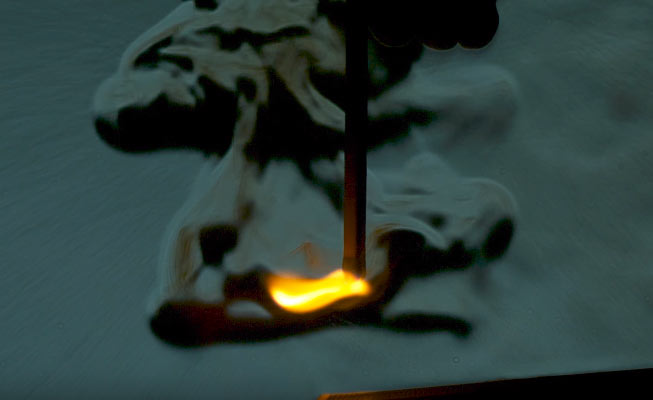If you ever wanted to see slow motion footage of the Apollo 13 Saturn V rocket on liftoff here is your chance. The video uploaded about 5 years ago by Spacecraft Films an aerospace related footage company that has some of the most compelling video on the subject. See http://www.spacecraftfilms.com/blog/ for more information on their footage and usage rights.
Tag Archives: 120fps
RED Hydrogen Phone for High Speed?
So we have gotten a lot of speculative emails regarding the RED Hydrogen phone teaser announcement. There are no real specs listed, only pricing which for Aluminum $1195 and Titanium $1595 USD is no bargain. It will be an Android phone with a revolutionary Holographic display capable of doing 2D-3D and holographic multiview which will be a mixture of the two.
The phone will also be a possible monitoring device for RED camera owners which will be able to control the cameras from the device. If you are a RED owner it makes sense to have this as your phone and we expect most RED camera owners to own the device or pre-order. After all the phone will be the same cost as a breakout module for the RED camera which costs up to 70k ready to shoot in the highest spec configurations.
Slow Motion News & Footage July!
July is typically a slow month for hardware news but there are still several things happening on the slow motion front that deserves your attention. We have gathered a series of information and footage that is becoming viral with the help of slow motion imaging.
A fairly new Youtube Channel “9 Months old” is gaining momentum by filming a 60,000PSI water jet cutter slicing through all sorts of objects. We are very impressed with the results of the Waterjet Channel and what they have been able to film in such a short time. They just broke 300k subscribers which is no easy feat. We share their latest video and urge you to subscribe in order to support their endeavors.
One Plus 5 Debuts With Only 720p 120fps!
There were a lot of expectations for the phone that would replace the One Plus 3T which was a mighty seller for the performance hungry crowd without the high price tag that typically goes along with the best phones. The new One Plus 5 is a good upgrade from the One Plus 3 and 3T in that the performance goes neck and neck with the best of the best out there and tied with the Samsung Galaxy S8 in benchmarks.
The tale, however, is not completely rosy as the camera module taking a page from the iPhone 7 Plus includes two camera sensor modules, one for wide-angle at 16MP and the other for telephoto with 20MP resolution. We say it falls short because the slow motion frame rates are pegged to a 720p resolution and only at 120fps. This is not flagship performance for video even when it ticks off all the other boxes like 4k 30p and 1080 60p.
Schlieren Imaging Slow Motion DIY!
Sometimes all it takes to embark on a new project is some unexpected inspiration. On the Incredible Slow Motion video by Veritasium – Seeing the Invisible: Schlieren Imaging in SLOW MOTION we are not only inspired but awestruck by the results of this simple and doable at home scientific experiment. The experiment allows a camera to visualize the vortexes of gases and temperature differences in the air which serve to create some very interesting scientific experiments and or artistic visualizations.
You will need a Concave Parabolic Mirror like the ones used in reflective Newtonian telescopes, “you may have one lying around from your stargazing days”, you will also need a small light source like an LED flashlight or single diode and finally a razor blade or similar precise object to cut off the light to the camera on a plane.
Fake Slow Motion Is It Worth It?
There has been a lot of work put it developing software that can interpolate frames for video editing and compositing applications. Twixtor in the late 90’s was perhaps the first time the technology could make something worthwhile and really produce acceptable results in a computationally acceptable timeframe.
Today the most used algorithm is Adobe’s Optical Flow in Premiere or Time Warp in After Effects which use vector directional plus acceleration of pixel values to derive in between frame data to generate new frame information from the preceding frame as point A and the next frame as point B. The results can do some wonders to really slow down things above the frame rate ceiling of the camera.






